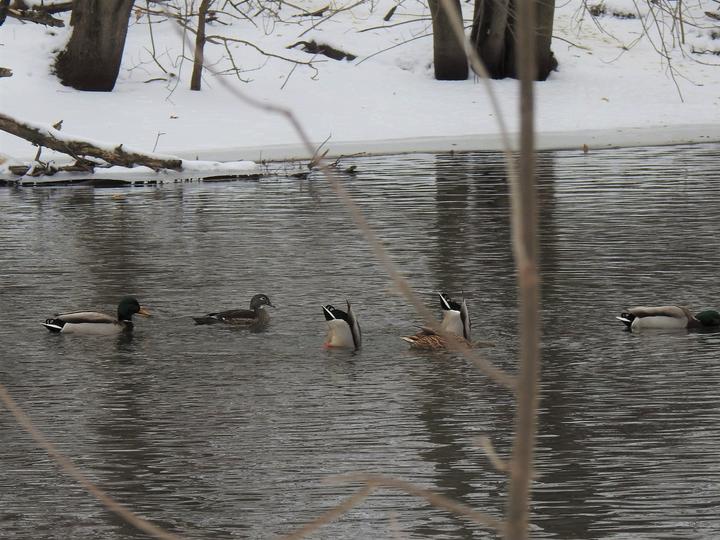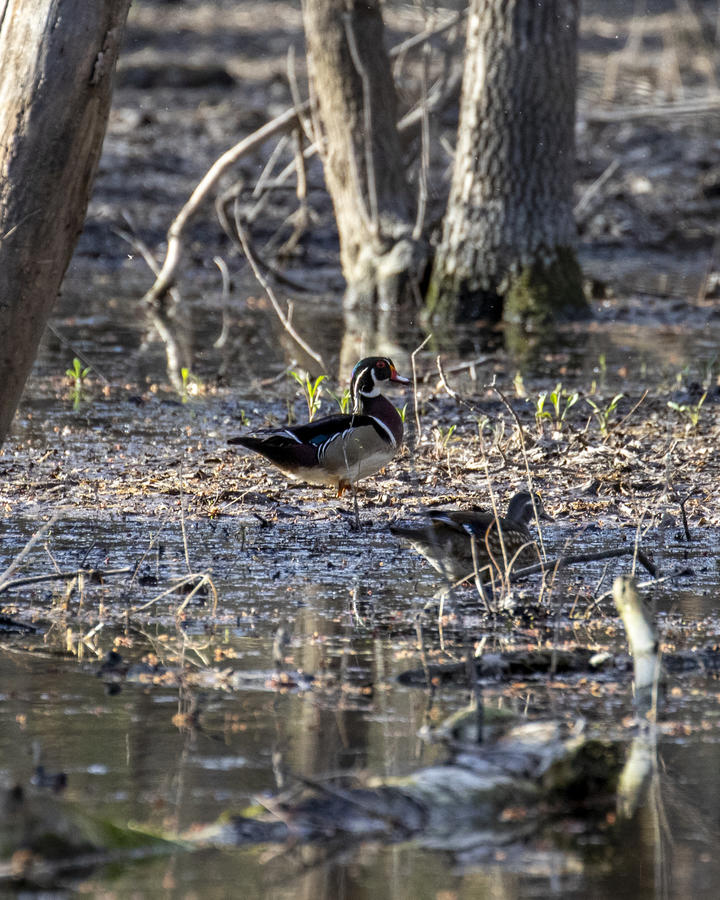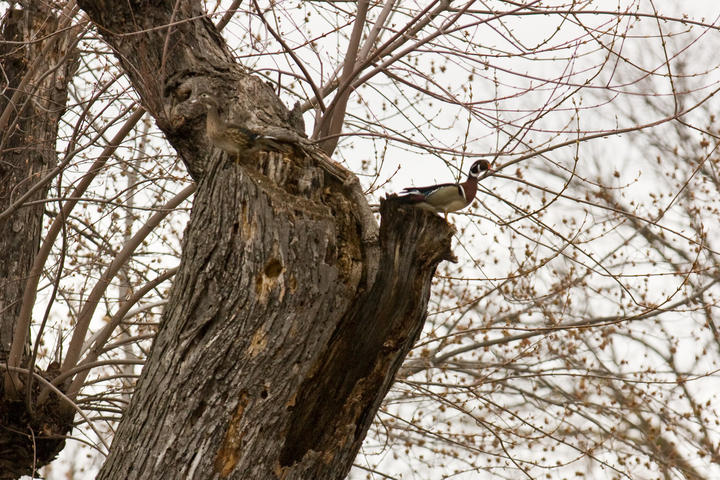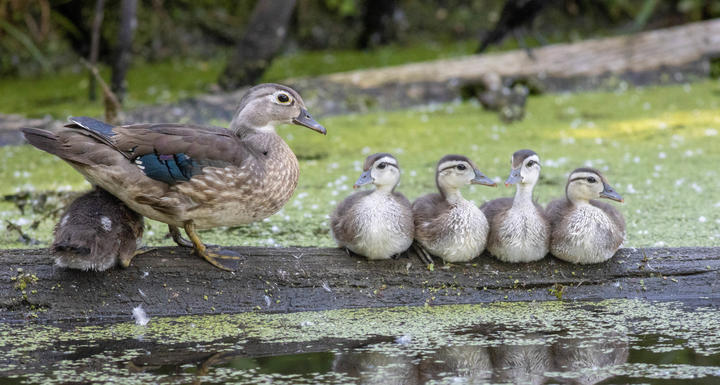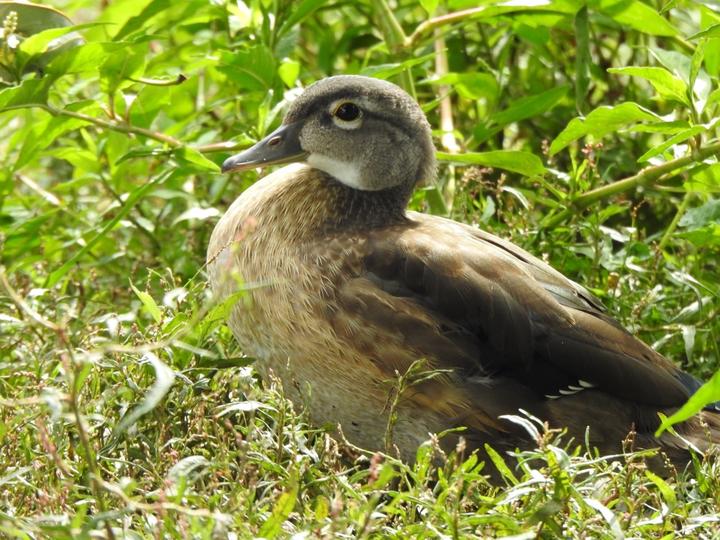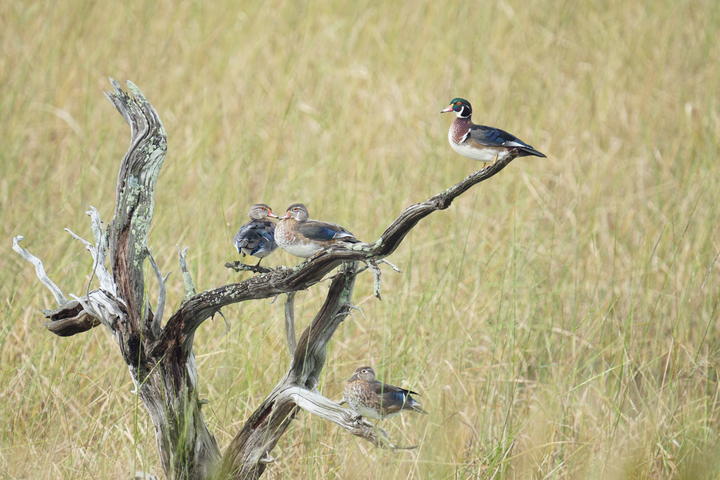More names for this bird
Anishinaabemowin: Zhiishiib (duck)
Dakota: Ṡkiṡka
The Dakota and Anishinaabe were among the earliest people to name Minnesota’s plants and animals, as well as to understand them in relation to Minnesota’s climate and seasons. Those original names are still in use, and several are included on the Season Watch website.
Latin (or scientific name): Aix sponsa
The scientific community has a convention of assigning agreed-upon Latin names to every kind of organism. Using scientific names helps people communicate confidently about the same organism and organize lifeforms based on how closely related they are.
Page contents
About the wood duck
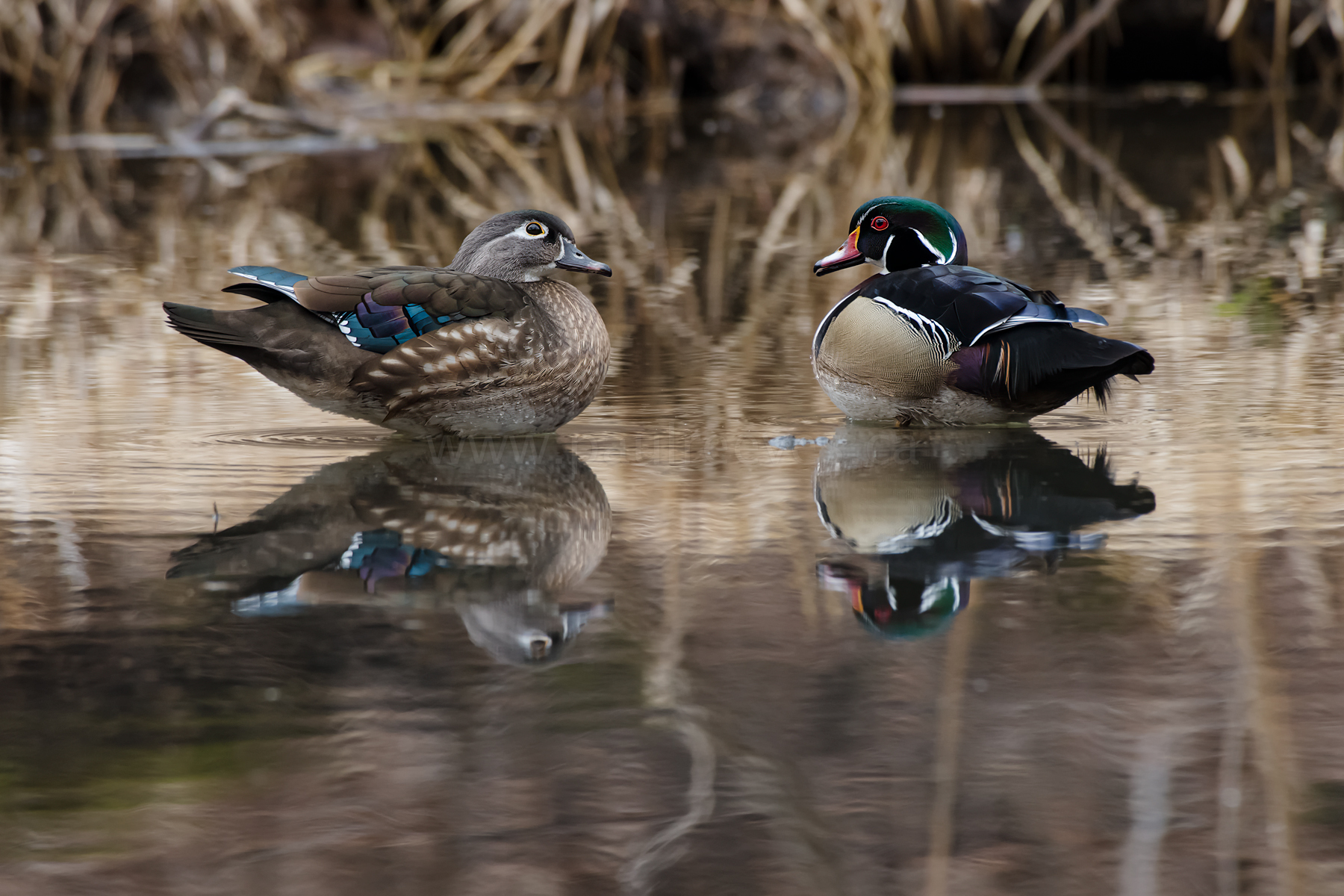
April 9, 2022, Toronto County, Ontario, Canada
Photo © Paul Reeves, some rights reserved (CC-BY-NC-SA)
iNaturalist observation
About the wood duck
- Wood ducks have a varied diet that includes insects (such as flies, caterpillars and beetles); seeds like acorns and millet; fruit; and aquatic vegetation (such as duckweed and waterlily).
- Wood ducks can be found in marshes, beaver ponds and forests next to water, as well as along waterways where there is adequate vegetation to provide cover.
- They nest in natural tree cavities anywhere from two to sixty feet off the ground. They will also use artificial nest boxes.
- Fun fact: Wood ducks are one of the few duck species with strong claws allowing them to grip and perch on tree branches.
Migration
Migration
Click the full-frame icon (lower right corner of video) to play at full size.
More about eBird's abundance animations
eBird data from 2006-2020. Estimated for 2020. Fink, D., T. Auer, A. Johnston, M. Strimas-Mackey, O. Robinson, S. Ligocki, W. Hochachka, L. Jaromczyk, C. Wood, I. Davies, M. Iliff, L. Seitz. 2021. eBird Status and Trends, Data Version: 2020; Released: 2021. Cornell Lab of Ornithology, Ithaca, New York. https://doi.org/10.2173/ebirdst.2020
Visual guide to phenology
Watch for changes in wood ducks' presence (or absence), abundance, and behaviors at different times of year. Also, pay attention to when young-of-year fledge and develop.
Note to observers
This page explains general clues to watch for when observing wood duck phenology. However, this page does not explain how to identify this bird or collect data in a standardized way.
- For help with identification, see The Cornell Lab's All About Birds.
- For guidance on collecting data, see Nature’s Notebook.
Graphs and historical data
Note: The Orientation Center provides a map, as well as information on reading graphs; interpreting summary statistics, who collected the data and how; and how to download datasets for independent exploration.
First seen
- Earliest: March 25 and 24 (occurred in 1985 and 2000)
- Average: April 4
- Latest: April 15 (occurred in 2002)
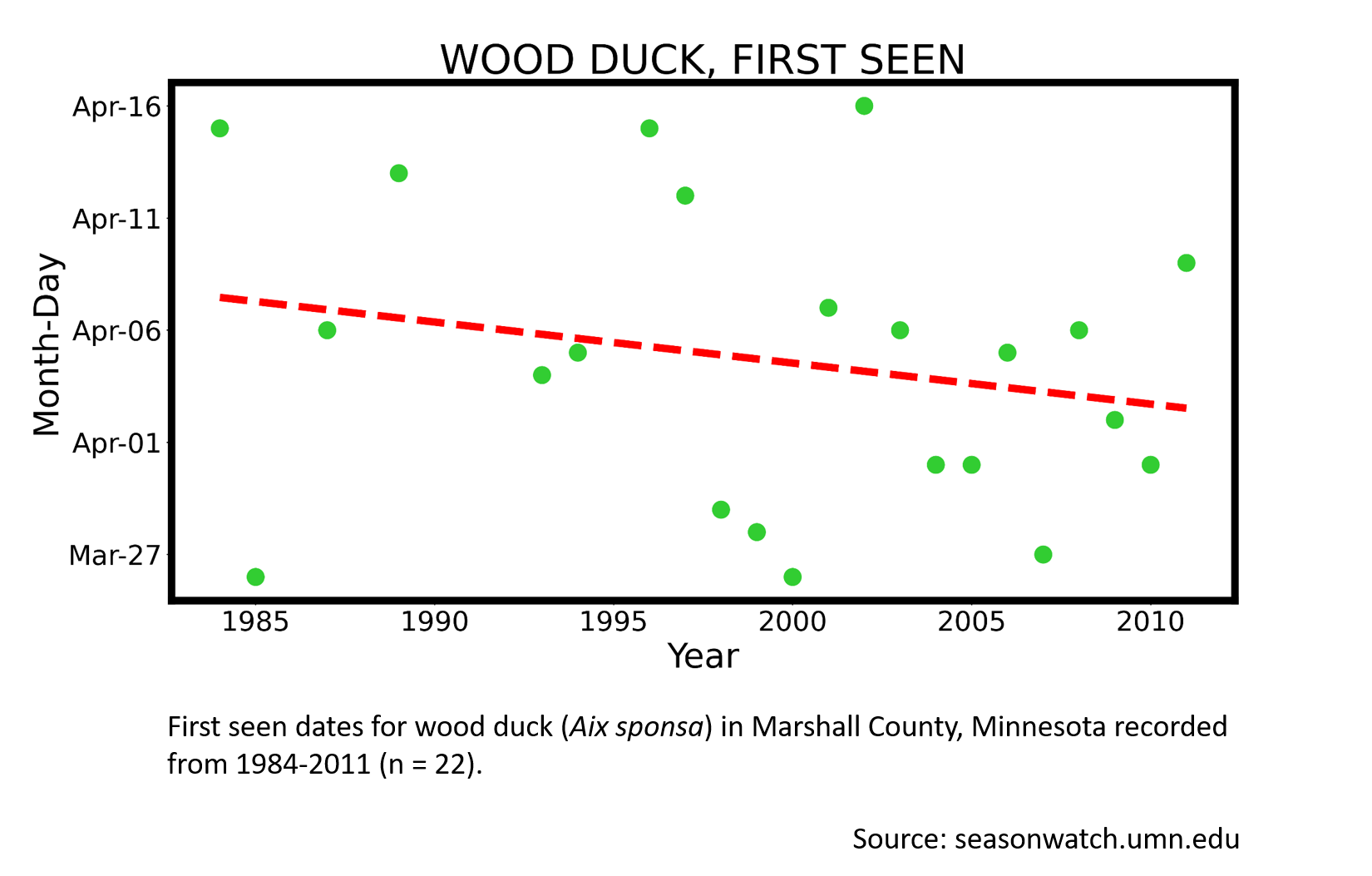
Arrival
- Earliest: February 13 (occurred in 1984)
- Average: March 17
- Latest: March 31 (occurred in 1980)
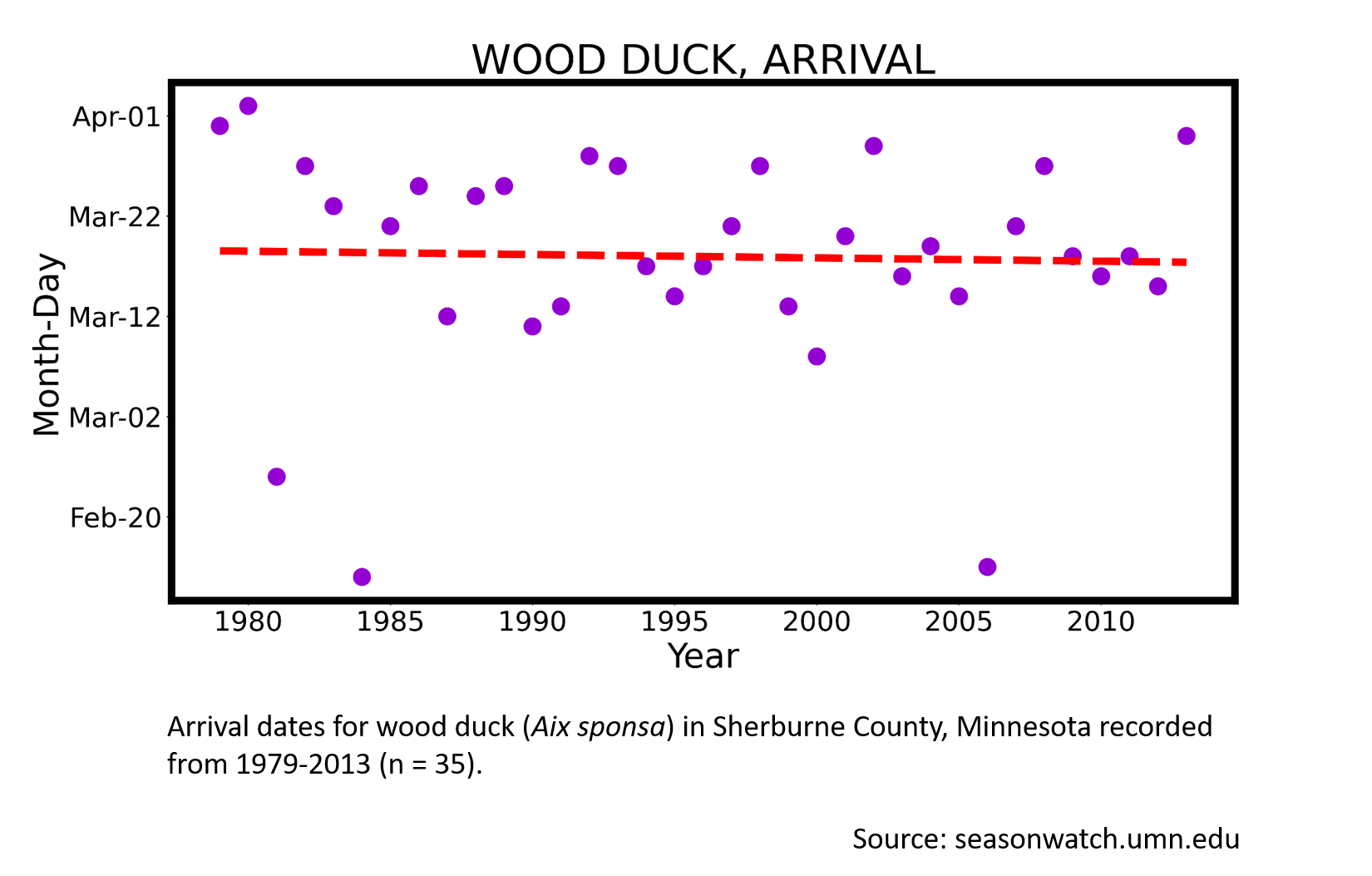
More resources
Keep exploring Season Watch
Keep exploring Season Watch
Co-author: Jayme Hogan, Minnesota Master Naturalist
